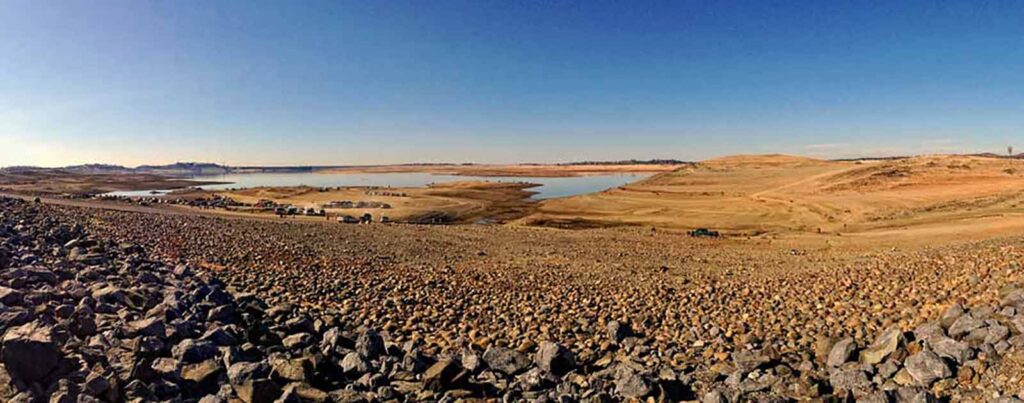Investing in a Drought Resilient Future
With the Governor’s leadership, California is now poised to invest in a new kind of flood management.

Last Thursday Governor Brown announced a farsighted $1 Billion dollar drought relief plan for California, but the $660 million allocated for flood management had many observers scratching their heads.
The Governor is absolutely right to be thinking ahead about flood: The epic ten-year Australian drought ended with the two biggest flood years on record. Below is a visual of what Californian’s need to prepare for:
[su_youtube url=”https://www.youtube.com/embed/vhatmWYkRNo” width=”1020″ height=”580″]
But if the $600 million is spent on traditional flood control projects to harden river banks and raise levees, it will do little or nothing to relieve the stresses of future droughts and floods. These projects are not only bad for the environment, but in too many cases they actually increase flood risk and degrade water quality by encouraging floodplain development.
With the Governor’s leadership, California is now poised to invest in a new kind of flood management, multi-benefit flood management projects, that will protect public safety and increase the state’s resiliency against future droughts.
California’s water and flood management system was built 50 – 150 years ago for a very different state and climate. The levees were built very close to the river in the latter half of the 19th century to flush Gold Rush mining debris out of clogged channels and facilitate navigation in the years before invention of the automobile. Fast forward 150 years and we are now forced to manage the Central Valley water system within the constraints of over 1,000 miles of aging and poorly engineered levees.
The 2012 Central Valley Flood Protection plan now calls for setting back levees and expanding floodways through a system of multi-benefit flood management projects that not only give rives more room to safely accommodate large floods, but they also improve water supply reliability, water quality, recreational opportunities, and habitat for fish and wildlife. The governor’s recent announcement is not only a down payment on a new flood management approach but also on a larger water management approach that better harnesses natural processes to meet human and environmental needs.
In particular, multi-benefit flood management projects provide many important water supply benefits.
- Water Retention and Usability: Widening floodways increases floodwater retention and groundwater recharge in a manner that could have significant water supply benefits. Floodplains capture peak flows and then release them back in a manner that provides benefits for both water diverters and ecological function. In some cases, floodplain restoration can significantly recharge depleted aquifers storing water in wet years for use in dry years.
- Reservoir Operations and Storage: Widening the regulatory floodway will ultimately create opportunities for changes in reservoir operations that will increase carryover storage from wet years to dry years. Currently, reservoir operators must keep a portion of the reservoir empty to capture dangerous floods. In late 2012, only months before the driest calendar year on record, reservoir operators were forced to release hundreds of thousands of acre feet of water to maintain the “flood reservation” behind large dams. Larger floodways would allow reservoir operators to safely release more water during large storms, allowing them to safely keep more water in the reservoir during all other periods.
- Reduce conflict between environmental and consumptive uses: Conflicts over the competing water demand for cities, agriculture, and sensitive species is one of California’s largest water management challenges. Multi-benefit flood management projects improve conditions for many sensitive species, and will thus reduce the probability that future water managers will need to choose between delivering drinking water or protecting species from extinction during future droughts.
- Reduce water demand by riparian and senior water rights holders: Widening regulatory floodways often results in the acquisition of riparian lands and water rights that can be retired in all years or fallowed in dry years. Agricultural production is still possible in a periodically inundated floodplain, but acquisition of floodplain lands creates the opportunity to fallow or retire senior and riparian water rights on floodplain lands, at least in dry years.
- Improve water quality: Irrigation and drainage of levee “protected” floodplains degrades water quality for drinking water and the environment. Restoration of floodplains and natural flooding patterns reduces both the need to divert high quality water for irrigation and the drainage related discharge of poor quality irrigation return water. In addition, restored floodplain wetlands filter and cleanse polluted waters associated with drainage from agricultural and urban lands.



